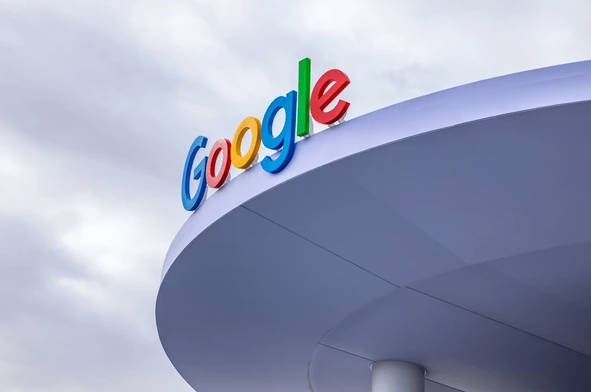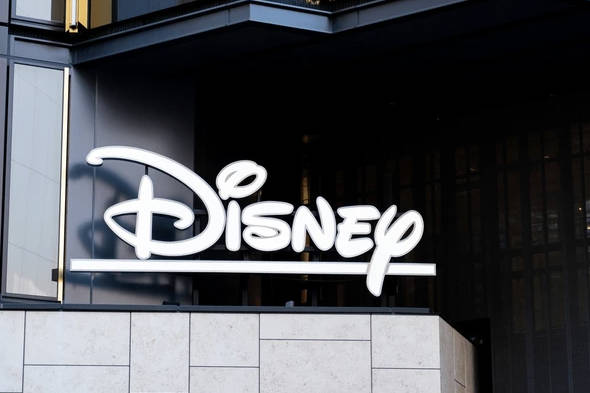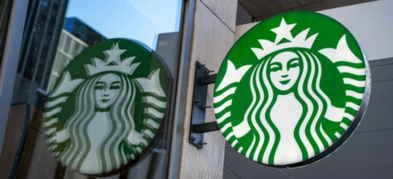Important Information
This website is managed by Ultima Markets’ international entities, and it’s important to emphasise that they are not subject to regulation by the FCA in the UK. Therefore, you must understand that you will not have the FCA’s protection when investing through this website – for example:
- You will not be guaranteed Negative Balance Protection
- You will not be protected by FCA’s leverage restrictions
- You will not have the right to settle disputes via the Financial Ombudsman Service (FOS)
- You will not be protected by Financial Services Compensation Scheme (FSCS)
- Any monies deposited will not be afforded the protection required under the FCA Client Assets Sourcebook. The level of protection for your funds will be determined by the regulations of the relevant local regulator.
Note: Ultima Markets is currently developing a dedicated website for UK clients and expects to onboard UK clients under FCA regulations in 2026.
If you would like to proceed and visit this website, you acknowledge and confirm the following:
- 1.The website is owned by Ultima Markets’ international entities and not by Ultima Markets UK Ltd, which is regulated by the FCA.
- 2.Ultima Markets Limited, or any of the Ultima Markets international entities, are neither based in the UK nor licensed by the FCA.
- 3.You are accessing the website at your own initiative and have not been solicited by Ultima Markets Limited in any way.
- 4.Investing through this website does not grant you the protections provided by the FCA.
- 5.Should you choose to invest through this website or with any of the international Ultima Markets entities, you will be subject to the rules and regulations of the relevant international regulatory authorities, not the FCA.
Ultima Markets wants to make it clear that we are duly licensed and authorised to offer the services and financial derivative products listed on our website. Individuals accessing this website and registering a trading account do so entirely of their own volition and without prior solicitation.
By confirming your decision to proceed with entering the website, you hereby affirm that this decision was solely initiated by you, and no solicitation has been made by any Ultima Markets entity.
I confirm my intention to proceed and enter this websiteOligopoly Examples and Definition Explained

When a small group of powerful firms controls most of an industry, you have an oligopoly. It sits between perfect competition and monopoly. Knowing the oligopoly definition and seeing real oligopoly examples helps you understand why prices can be sticky, why products look similar across brands, and why rivals watch one another closely.
What Is an Oligopoly?
An oligopoly is a market structure where a few firms hold most of the market share and each firm’s decisions influence the others. Entry is difficult, so leadership positions tend to persist. Prices move less than in fragmented markets because firms anticipate rival reactions and often avoid destructive price wars.
Oligopoly examples highlight the common pattern: high fixed costs or regulation, network effects, and customer lock-in.
Features of an Oligopoly
- Few dominant firms hold the bulk of sales
- High barriers to entry such as capital needs, regulation, patents, spectrum or scarce inputs
- Interdependence where one move quickly triggers responses across rivals
- Price rigidity with competition shifting to branding, features, bundles and service
- Measurable concentration using CR4 or CR5 and the Herfindahl Hirschman Index
Why Oligopolies Form
Most oligopolies emerge after years of consolidation and protective rules. When starting up requires heavy investment, licences or intellectual property rights, only a handful of scaled firms can serve demand. Even without explicit collusion, leaders often mirror prices, contract terms and product cycles, which makes outcomes look coordinated.
A Quick Screening Rule
If the top five firms account for roughly sixty percent or more of sales, you are likely looking at an oligopoly. Treat this as a screening rule rather than a legal test.
Real-World Oligopoly Examples
Below are widely recognised industries where a handful of firms set the tone, with one line on why each market stays concentrated.
Mass media
AT and T, Comcast, Disney and Charter control much of US distribution and content pipelines. Scale in production rights and networks keeps the field tight.
Streaming and platforms
Amazon, Netflix and a few studio owned platforms anchor subscriptions. Content libraries, recommendation data and billing relationships raise switching costs.
Big tech operating systems
Apple iOS and Google Android dominate smartphones. Microsoft Windows and Apple lead desktop operating systems. Developer ecosystems and app stores create lock in.
Search and online ads
Google and Meta set the standards for reach and targeting in most regions. Data advantages and network effects reinforce their position.

Automakers
Toyota, Volkswagen Group, Hyundai Motor Group, GM, Ford, Stellantis, Honda, Renault Nissan Mitsubishi and Tesla lead global volumes. Scale, supplier networks, safety regulation and distribution protect incumbents.
Wireless carriers
Verizon, AT and T and T Mobile dominate US mobile service. Spectrum rights, towers and capital needs deter entrants.
Airlines
American, Delta, Southwest and United carry most US domestic passengers. Fleet costs, airport slots and safety approvals are major barriers.
Entertainment studios
Disney, Paramount, Sony, Universal and Warner Bros account for most North American box office. Control of franchises and distribution windows matters more than price.

Recorded music
Universal Music Group, Sony Music and Warner Music own most master rights and catalogues. Back catalogues and artist pipelines create scale economies.
Payment networks
Visa and Mastercard with American Express in some regions provide the rails most merchants require. Acceptance coverage and risk systems keep them ahead.
Commercial aircraft
Boeing and Airbus supply large passenger jets. Certification and production scale are daunting for newcomers.
Pharmaceuticals
A small set of global firms controls discovery pipelines and distribution in many therapeutic areas. Patents and multi year clinical trials are core barriers.
Soft drinks
Two global giants anchor shelf space and advertising share. Competition focuses on brand power and distribution access more than price.
Parcel and express delivery
UPS and FedEx dominate time definite delivery in the United States. Hubs aircraft fleets and routing software create scale that is hard to copy.
Homogeneous Oligopoly
Some markets sell near-identical products and compete mostly on output and efficiency. Clear oligopoly examples include crude oil, steel, and cement, where price cuts are quickly matched.
Monopoly vs Oligopoly
If you’re wondering whether oligopoly is the same as monopoly, it isn’t. A monopoly has one seller with full control. An oligopoly has a few dominant firms that must anticipate one another’s reactions. Both have high entry barriers, but oligopoly examples mean limited brand choice and steadier prices, while monopolies face stricter oversight on price and service.
Number of firms
Monopoly has one seller. Oligopoly has a few dominant sellers.
Barriers to entry
Both are high. Monopoly often rests on exclusive rights or control of a key input. Oligopoly is difficult but not impossible to enter.
Pricing power
A monopolist sets price subject to demand and oversight. Oligopolists have power but must anticipate rival reactions, which keeps prices steadier.
Consumer choice
Monopoly offers one source. Oligopoly offers limited choice across brands and features.
Regulatory focus
Monopolies face price and service oversight. Oligopolies draw scrutiny around collusion, coordination, and mergers.
How Firms Compete Inside an Oligopoly
Because price cuts are quickly matched, firms shift the contest to other levers.
- Product and brand differentiation
- Bundles loyalty programmes and ecosystem lock in
- Capacity and inventory decisions
- Research and development and exclusive content
- Service quality and distribution reach
In simple models you will see two lenses. Cournot focuses on quantity choices when products are similar. Bertrand focuses on price setting and shows why differentiation matters for margins.
How to Tell if a Market is an Oligopoly
You do not need perfect data to make a first pass.
- List the top firms and estimate their combined share from public filings or industry reports
- Identify barriers to entry such as licences patents spectrum or large capital requirements
- Watch for follow the leader behaviour in fees bundles and release cycles
- Check switching costs and loyalty programmes that keep customers in place
If most sales sit with a small group and rivals mirror each other, you are likely looking at an oligopoly.
Bottom Line on Oligopoly Examples
Across media, tech, autos, airlines, payments, and more, oligopoly examples show how a few firms shape prices, innovation, and customer experience. Recognise the signs first, then use the examples to read strategy and risk in concentrated markets.
Frequently Asked Questions
Is an oligopoly illegal
No. The structure itself is not illegal. What draws enforcement is collusion or conduct that harms competition.
What is the difference between a duopoly and an oligopoly
A duopoly is an oligopoly with two main firms. Commercial aircraft and some payment markets look like this at specific product levels.
Why do prices feel sticky in oligopolies
If one firm cuts price and others follow, nobody wins. Firms prefer to compete on features brand and service.
Can new entrants break an oligopoly
Yes, but it is hard. Technology shifts, regulatory change or a new business model can open the door. It usually takes deep capital and time.
Disclaimer: This content is provided for informational purposes only and does not constitute, and should not be construed as, financial, investment, or other professional advice. No statement or opinion contained here in should be considered a recommendation by Ultima Markets or the author regarding any specific investment product, strategy, or transaction. Readers are advised not to rely solely on this material when making investment decisions and should seek independent advice where appropriate.












